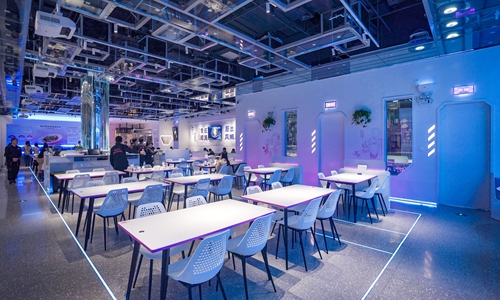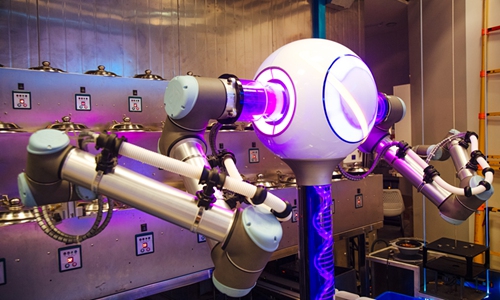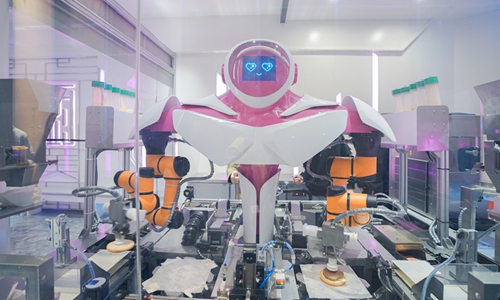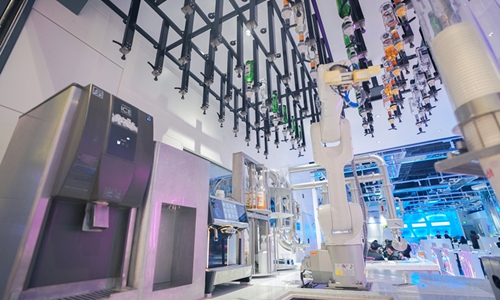HOME >> SCI-TECH
Futuristic! Robotic kitchen ready to serve
Source:Xinhua Published: 2020/1/17 20:21:44

The new robotic restaurant in Guangzhou, south China's Guangdong Province, Jan. 12, 2020. (Photo provided to Xinhua)
Lin Chaodai, a 52-year-old award-winning chef of Cantonese cuisine, had never thought about taking robots as his students. Nor had he imagined that a robot could be "trained" to cook with the skill and flair of a master chef like himself.
Yet in the past year or so, Lin and 10 other chefs from Shunde, a southern Chinese city known for its exquisite Cantonese delicacies, have been recruited to develop a menu and "teach" robots to cook, for a new restaurant in downtown Guangzhou, capital of Guangdong Province.
To ensure good flavors, Cantonese cuisine relies on meticulous heat control and precise cooking times and portions of ingredients, said Lin. He and other chefs recorded the recipes down to the smallest detail and fed the data into computers before engineers began their time-consuming adjustments and tests.

A robot chef makes pot rice in a new restaurant in Guangzhou, south China's Guangdong Province, Jan. 12, 2020. (Photo provided to Xinhua)
Now, these robot chefs are ready to serve dozens of dishes ranging from burgers, noodle bowls to pot rice, stir-frys, desserts and cocktails in a fancy dining place that has drawn a crowd of curious food lovers since opening on Jan. 12.
Customers place their orders using a touch-screen device inside the restaurant. Then an ingredient delivery system collects the ingredients and portions them, before delivering them into 32 robotic woks.
The woks are set at an angle that allows the customers to watch their food being prepared in front of them.

A robot chef makes burgers in a new restaurant in Guangzhou, south China's Guangdong Province, Jan. 12, 2020. (Photo provided to Xinhua)
After the dishes are completed, the machines then automatically clean themselves, consuming much less water than the average dishwasher in the process.
It's not just human chefs and bartenders that are replaced, service robots bring orders to customers' tables instead of traditional waiters.
The 46 robots in the restaurant are developed by Foodom Restaurant Group. "The average cooking time per dish of a robotic wok is between three to five minutes," said Yan Weixin, head of the research and development department of Foodom.

A robot chef makes cocktails in a new restaurant in Guangzhou, south China's Guangdong Province, Jan. 12, 2020. (Photo provided to Xinhua)
Yan said machines are designed to follow the standards and instructions closely while the performances of human chefs sometimes are not up to scratch.
Intelligent dining is gaining steam in China as the expanding food market prompts the industry to go digital.
China's service robot market is expected to reach 2.2 billion U.S. dollars in 2019, up 33.1 percent year on year, higher than the global average growth. Robots for the dining industry in particular are in growing demand.
Robotic kitchens can help resolve understaffing issues at restaurants, largely upgrade the efficiency of managing staff and cut labor costs, said Qiu Mi, general manager of Foodom.
The robotic kitchen is an attempt to innovate the dining business in China while retaining the traditional flavors of cuisine, said Lin, professing his confidence in the efficiency and the culinary skills of robot chefs.
RELATED ARTICLES:
Posted in: OTHERS